*NURSING > QUESTIONS & ANSWERS > ATI Cirrhosis and Pacreatitis.[WITH CORRECT QUESTIONS AND ANSWERS IMPROVE GRADE A+] (All)
ATI Cirrhosis and Pacreatitis.[WITH CORRECT QUESTIONS AND ANSWERS IMPROVE GRADE A+]
Document Content and Description Below
1.A nurse is preparing to administer three liquid medications to a client who has an NG tube with intermittent suction. Which of the following actions should the nurse take? A. Mix the three medicat... ions together prior to administering. Rationale: The nurse should administer each medication separately and flush the tube with 15 to 30 mL of sterile water to ensure the client receives the entire dose. B. Dilute each medication with 10 mL of tap water. Rationale:If the nurse needs to further dilute the medication because it is viscous, the nurse should only use sterile water because tap water can contain contaminants that can adversely interact with the medication. C. Reattach the suction directly after administering the medication. Rationale: The nurse should clamp the tube for 20 to 30 min after administering the medication to allow time for the client to absorb it and not lose it by suction. D. Pinch the tube prior to attaching the medication syringe. Rationale:After detaching the NG tube from the suction tubing, the nurse should pinch or kink the tube to prevent distention from air entering the tube. 2.A nurse is reviewing the laboratory data of a client who has acute pancreatitis. The nurse should expect to find an elevation of which of following values? A. Calcium Rationale: The nurse should expect a decreased calcium level in a client who has acute pancreatitis. B. RBC count Rationale: The nurse should expect an elevated WBC count in a client who has acute pancreatitis. C. Magnesium Rationale: The nurse should expect to a decreased magnesium level in a client who has acute pancreatitis. D. Amylase Rationale:Amylase is an enzyme that changes complex sugars into simple sugars that can be used by the body. It is produced by the pancreas and salivary glands and released into the mouth, stomach, and intestines to aid in digestion. The amylase level of a client who has acute pancreatitis usually increases within 12 to 24 hr and can remain elevated for 2 to 3 days. 3.A nurse is caring for a client who has chronic kidney disease (CKD) and states she has heartburn. The provider prescribes aluminum hydroxide. The client asks, "Why can't I just take the antacid magaldrate my husband has at home?" The nurse explains to the client that aluminum hydroxide is the preferred antacid because it lowers which of Created on:07/06/2018 Page 1 https://www.coursehero.com/file/44054748/ATI-Cirrhosis-and-Pacreatitis-ANSWER-KEY-3pdf/ This study resource was shared via CourseHero.com Detailed Answer Key Cirrhosis and Pancreatitis Practice the following? A. Serum phosphorus levels Rationale:Aluminum-based formulas are also a phosphate binder, helping to lower serum phosphorus levels in clients who have CKD. B. Serum potassium levels Rationale: Neither aluminum-based nor magnesium-based antacids have an effect on potassium levels. C. Serum magnesium levels Rationale:Aluminum-based antacids have no effect on magnesium levels, but magnesium-based antacids may elevate magnesium levels. D. Serum calcium levels Rationale:Aluminum-based formulas elevate serum calcium levels. 4.A nurse is planning care for a client who has cirrhosis and ascites. Which of the following interventions should the nurse include in the plan of care? A. Decrease the client’s fluid intake. Rationale: The nurse should restrict fluids for a client who has cirrhosis and ascites due to the client’s risk for increased fluid retention. B. Increase the client’s saturated fat intake. Rationale: The nurse should limit the fat intake for a client who has cirrhosis due to the risk of malabsorption and steatorrhea. C. Increase the client’s sodium intake. Rationale: The nurse should limit the sodium intake for a client who has cirrhosis and ascites due to the client’s risk for increased fluid retention. D. Decrease the client’s carbohydrate intake. Rationale:It is not necessary for the nurse to decrease the carbohydrate intake for a client who has cirrhosis or ascites. 5.A nurse is providing teaching to a client who has a history of pancreatitis. Which of the following food choices should the nurse instruct the client to avoid? A. Noodles Rationale: Clients who have a history of pancreatitis should avoid foods high in fat. Noodles are low in fat and are therefore an appropriate food choice. Created on:07/06/2018 Page 2 https://www.coursehero.com/file/44054748/ATI-Cirrhosis-and-Pacreatitis-ANSWER-KEY-3pdf/ This study resource was shared via CourseHero.com Detailed Answer Key Cirrhosis and Pancreatitis Practice B. Vegetable soup Rationale: Clients who have a history of pancreatitis should avoid foods high in fat. Vegetable soup is low in fat and is therefore an appropriate food choice. C. Baked fish Rationale: Clients who have a history of pancreatitis should avoid foods high in fat. Baked fish is low in fat and is therefore an appropriate food choice. D. Cheddar cheese Rationale: Clients who have pancreatitis should avoid foods high in fat. Cheddar cheese is high in fat content and the client should avoid this food choice. 6.A nurse is providing discharge teaching for a client who has chronic pancreatitis. Which of the following statements should the nurse make? A. “You should decrease your caloric intake when abdominal pain is present.” Rationale: Clients who have chronic pancreatitis are at risk for malnutrition and should increase their caloric intake in order to maintain weight. B. “You should increase your daily intake of protein.” Rationale: Clients who have chronic pancreatitis should consume a diet that is high in protein. C. “You should increase fat intake when experiencing loose stools.” Rationale: Clients who have chronic pancreatitis should consume a low-fat diet to prevent stimulation of the pancreas and steatorrhea. D. “You should limit alcohol intake to 2-3 drinks per week.” Rationale: Clients who have chronic pancreatitis should avoid alcohol intake to prevent stimulation of the pancreas. 7.A nurse is providing discharge teaching for a client who has acute pancreatitis and has a prescription for fat-soluble vitamin supplements. The nurse should instruct the client to take a supplement for which of the following? A. Vitamin A Rationale: The nurse should instruct the client that fat-soluble vitamins include vitamins A, D, E, and K. B. Vitamin B1 Rationale:Vitamin B1 is a water-soluble vitamin and would not be prescribed as a fat-soluble vitamin, which includes vitamins A, D, E, and K. C. Vitamin C [Show More]
Last updated: 1 year ago
Preview 1 out of 9 pages

Reviews( 0 )
Document information
Connected school, study & course
About the document
Uploaded On
Mar 22, 2021
Number of pages
9
Written in
Additional information
This document has been written for:
Uploaded
Mar 22, 2021
Downloads
0
Views
110

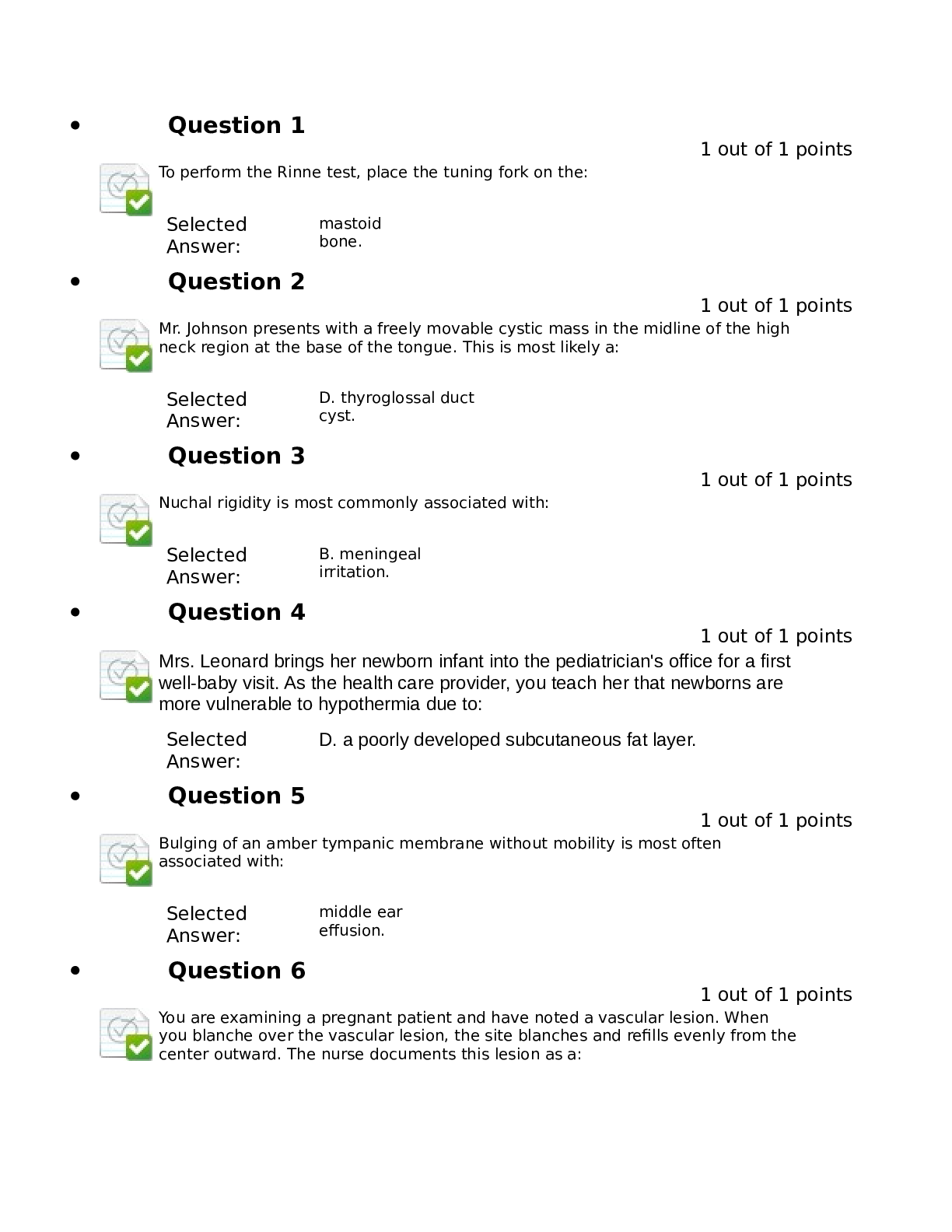
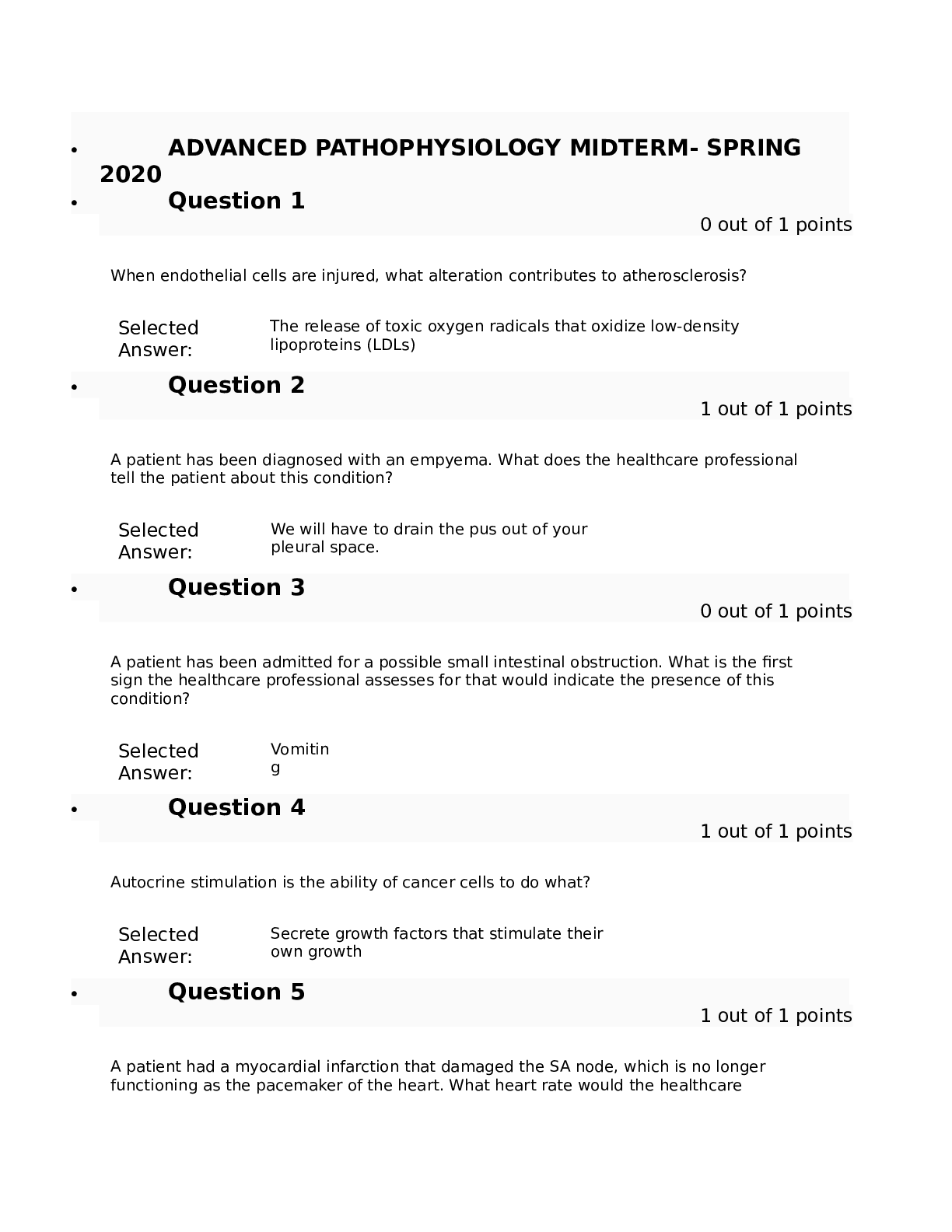
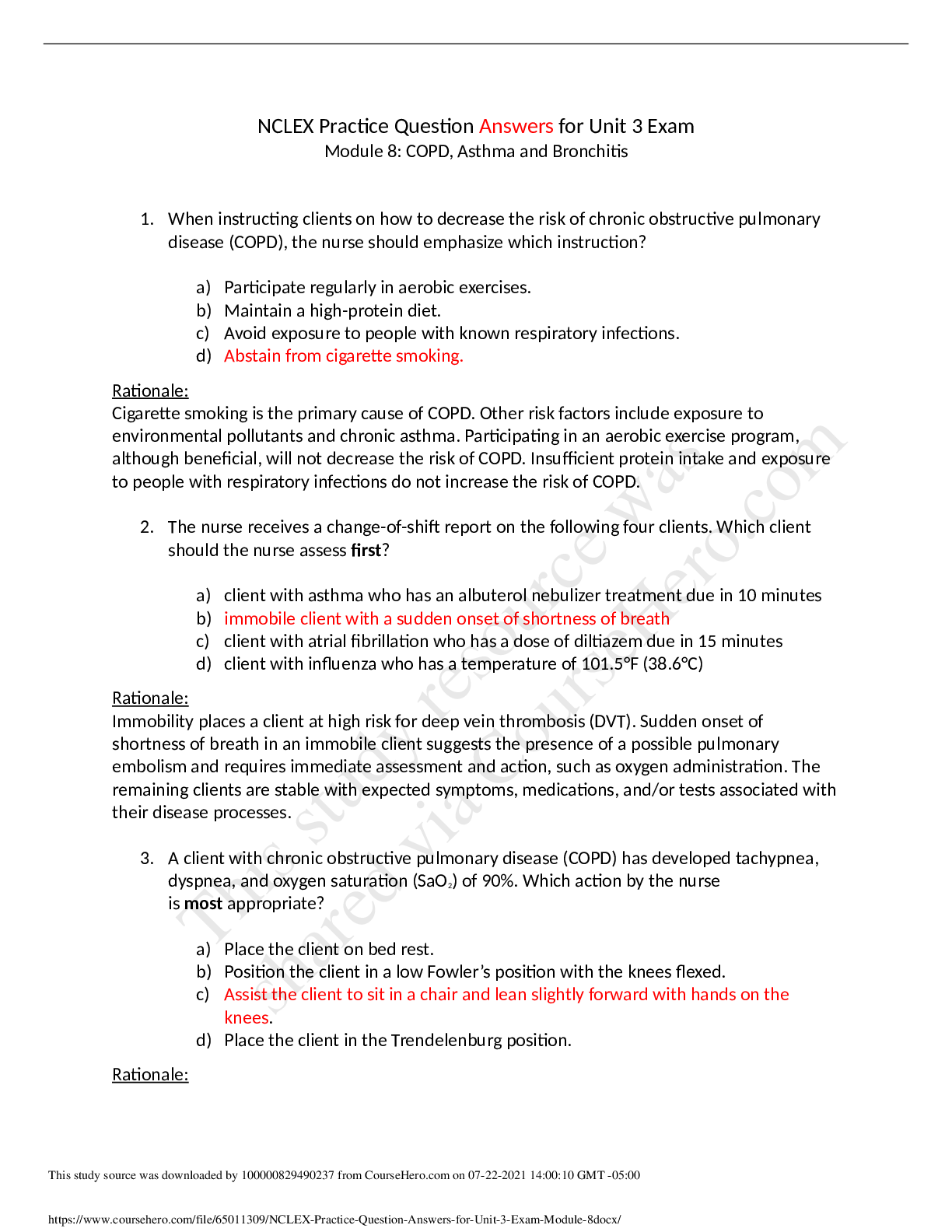
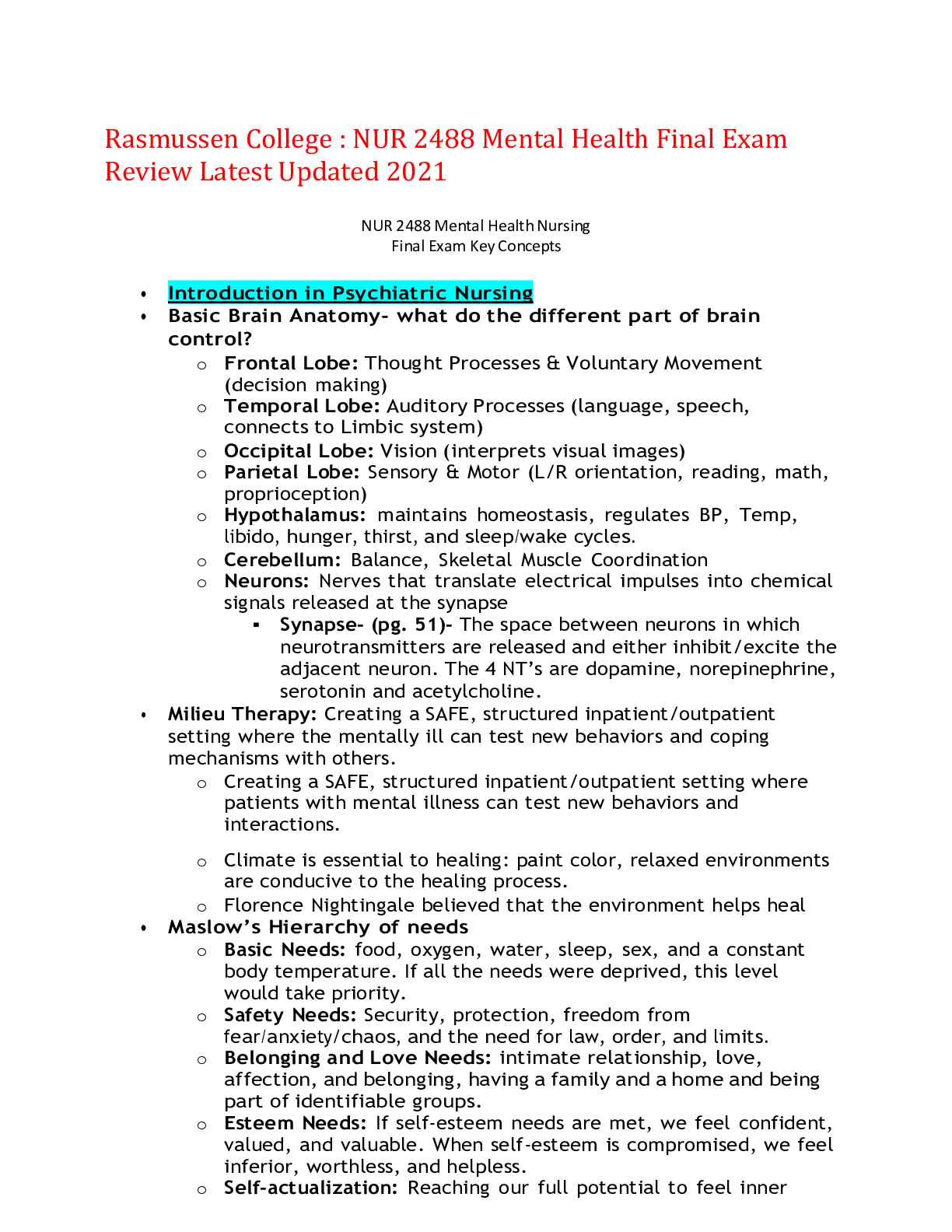
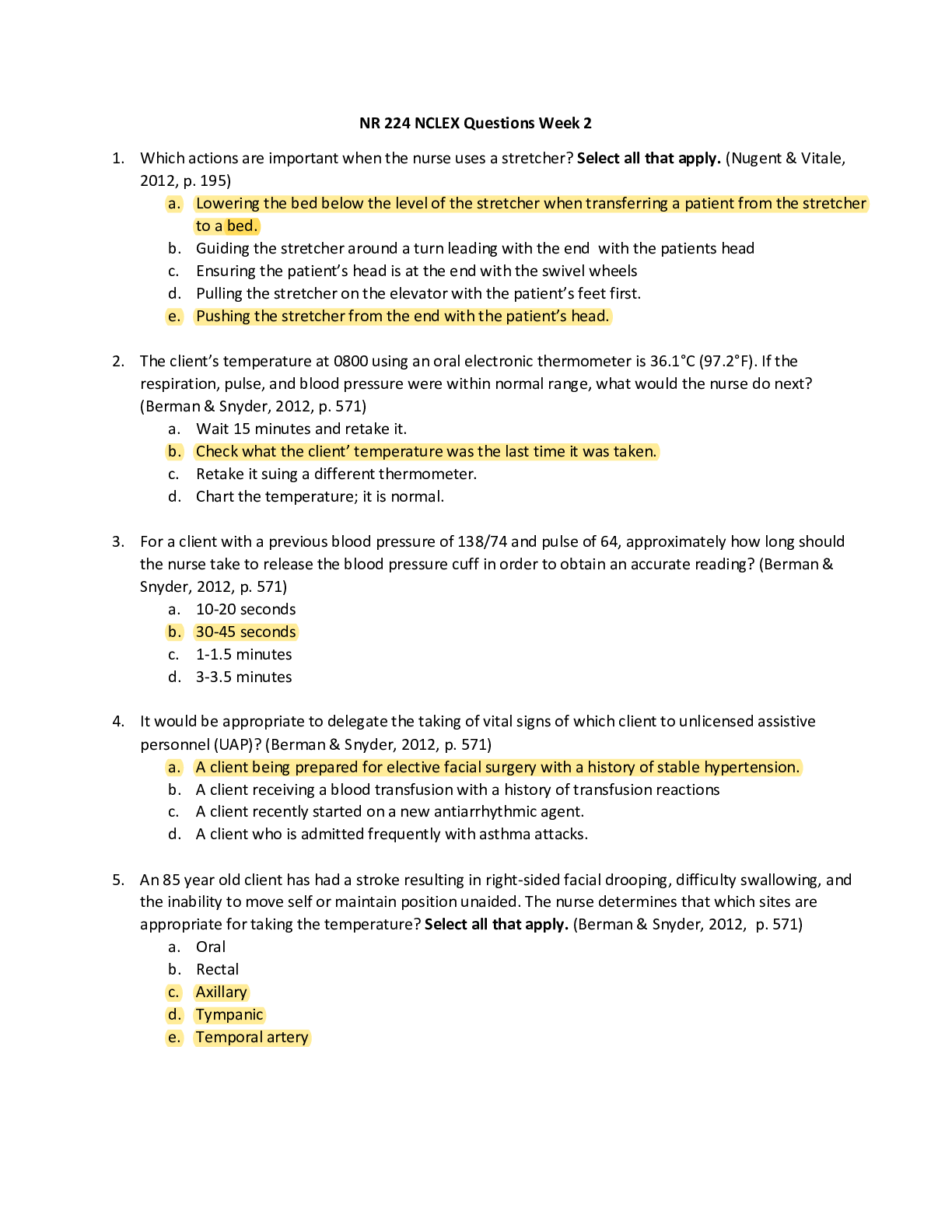
.png)
.png)
.png)

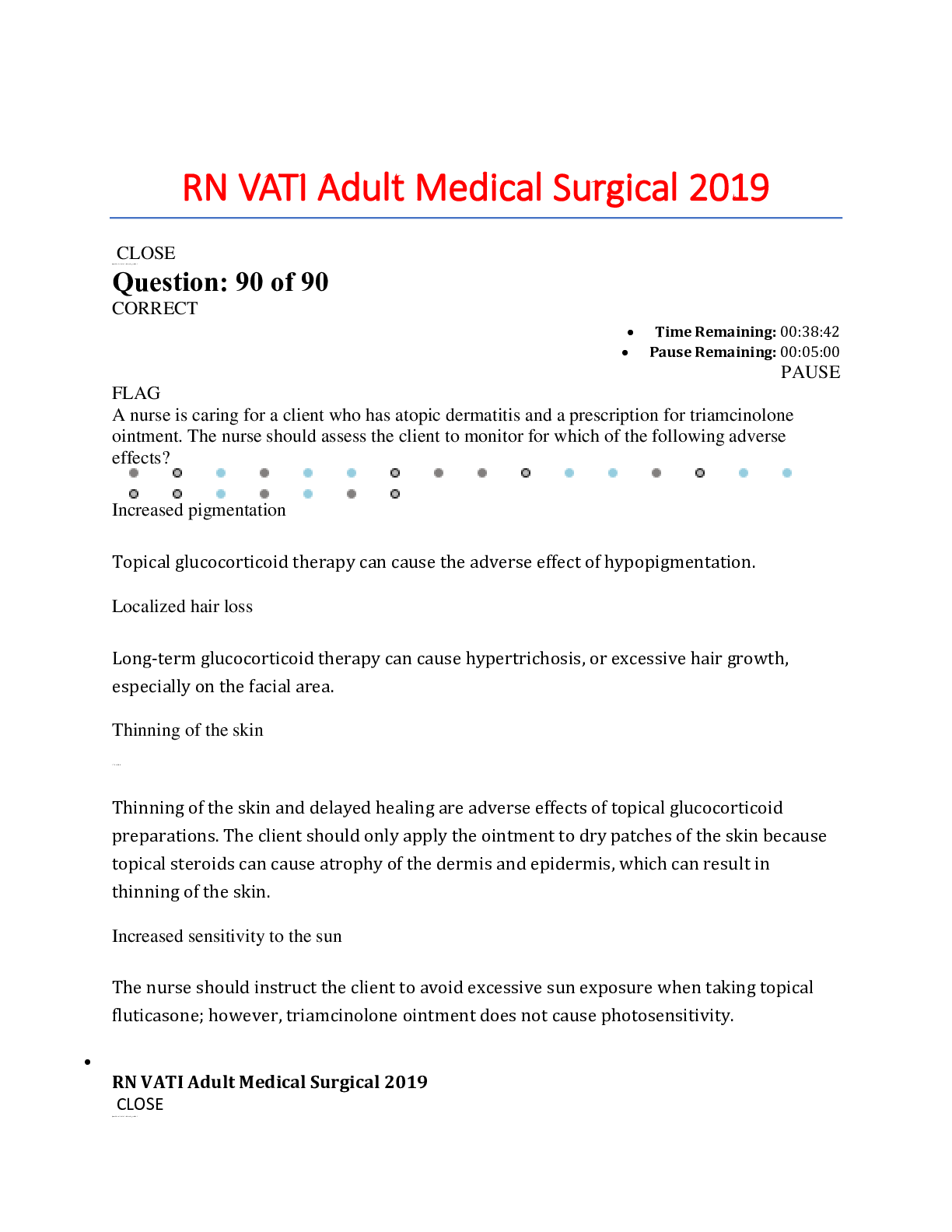
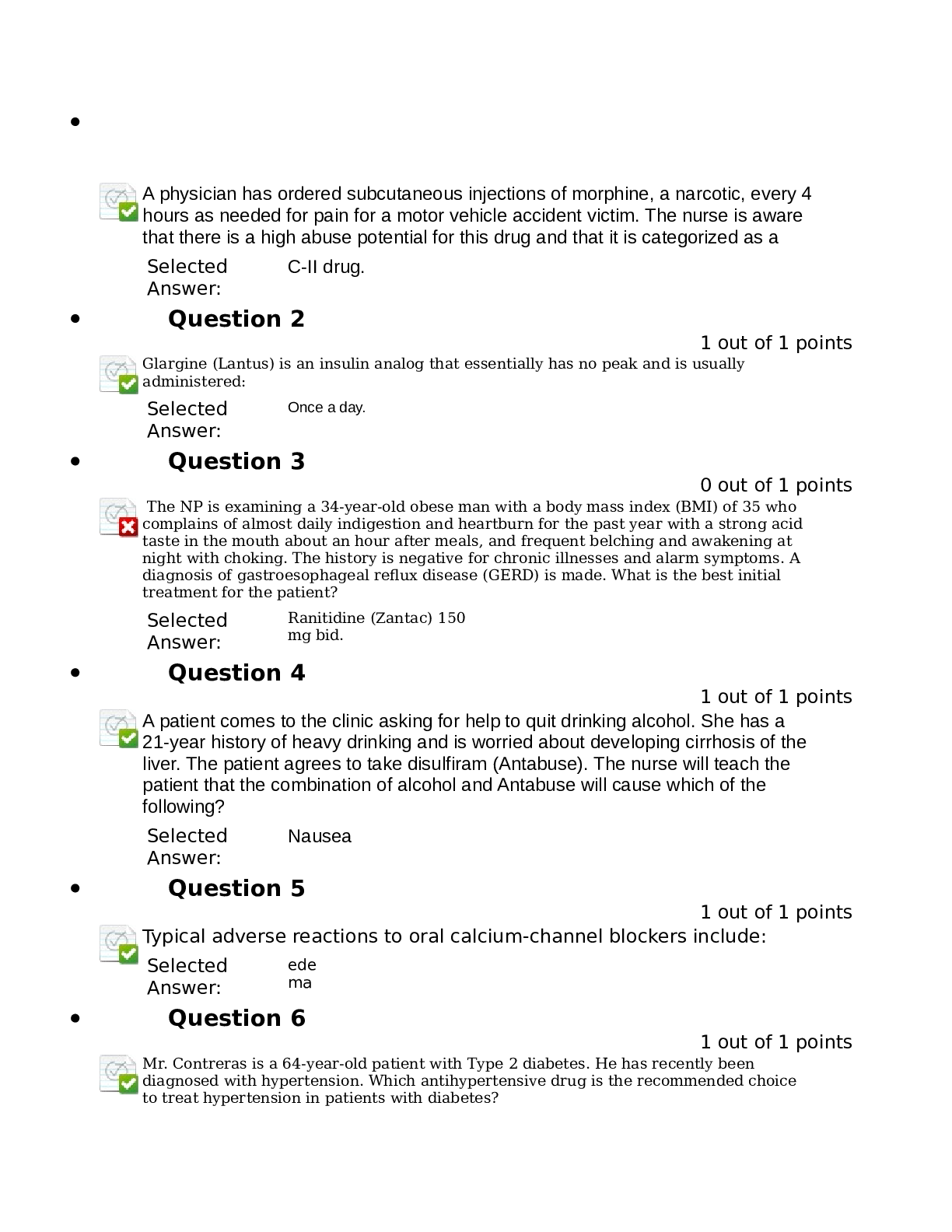

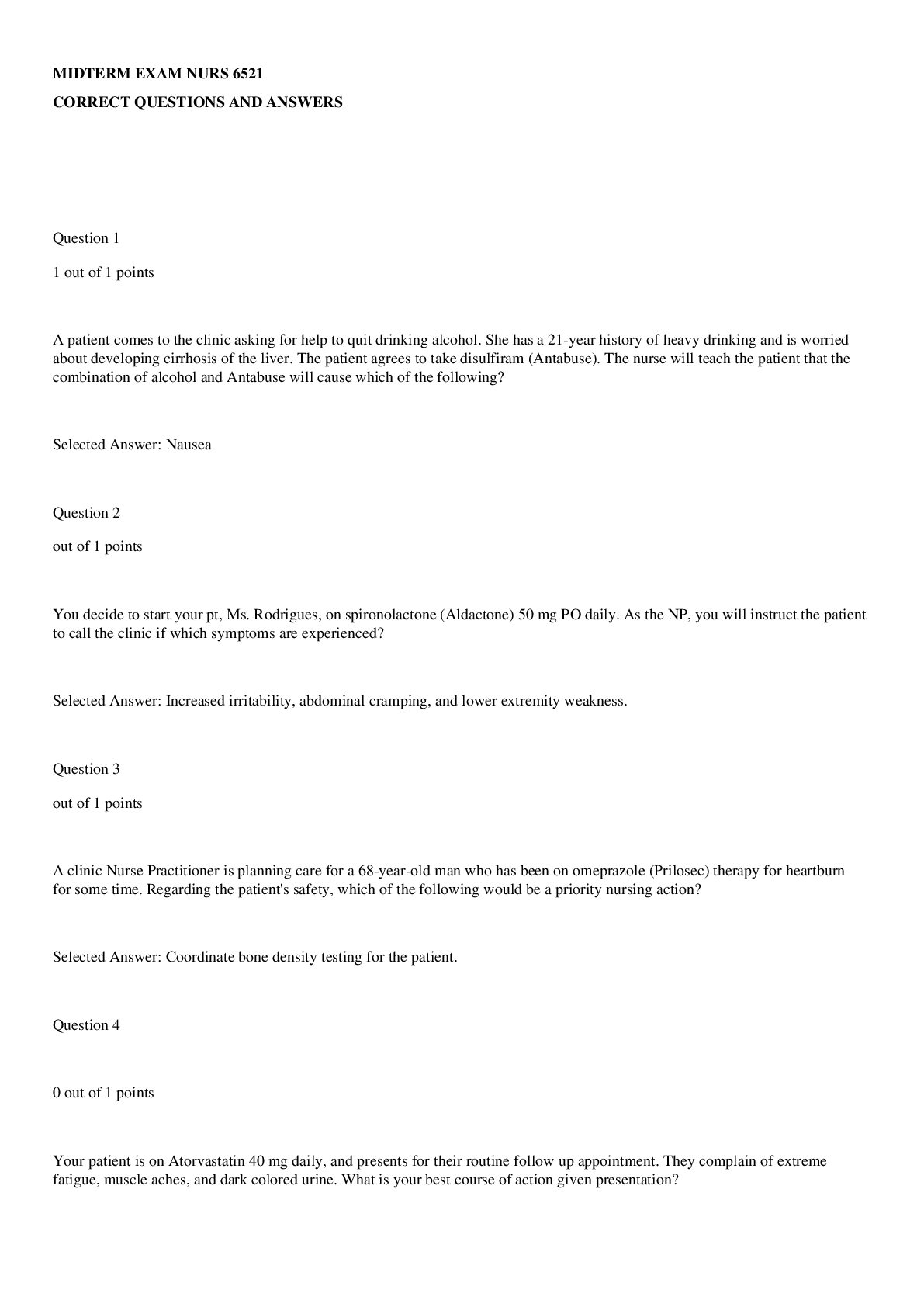
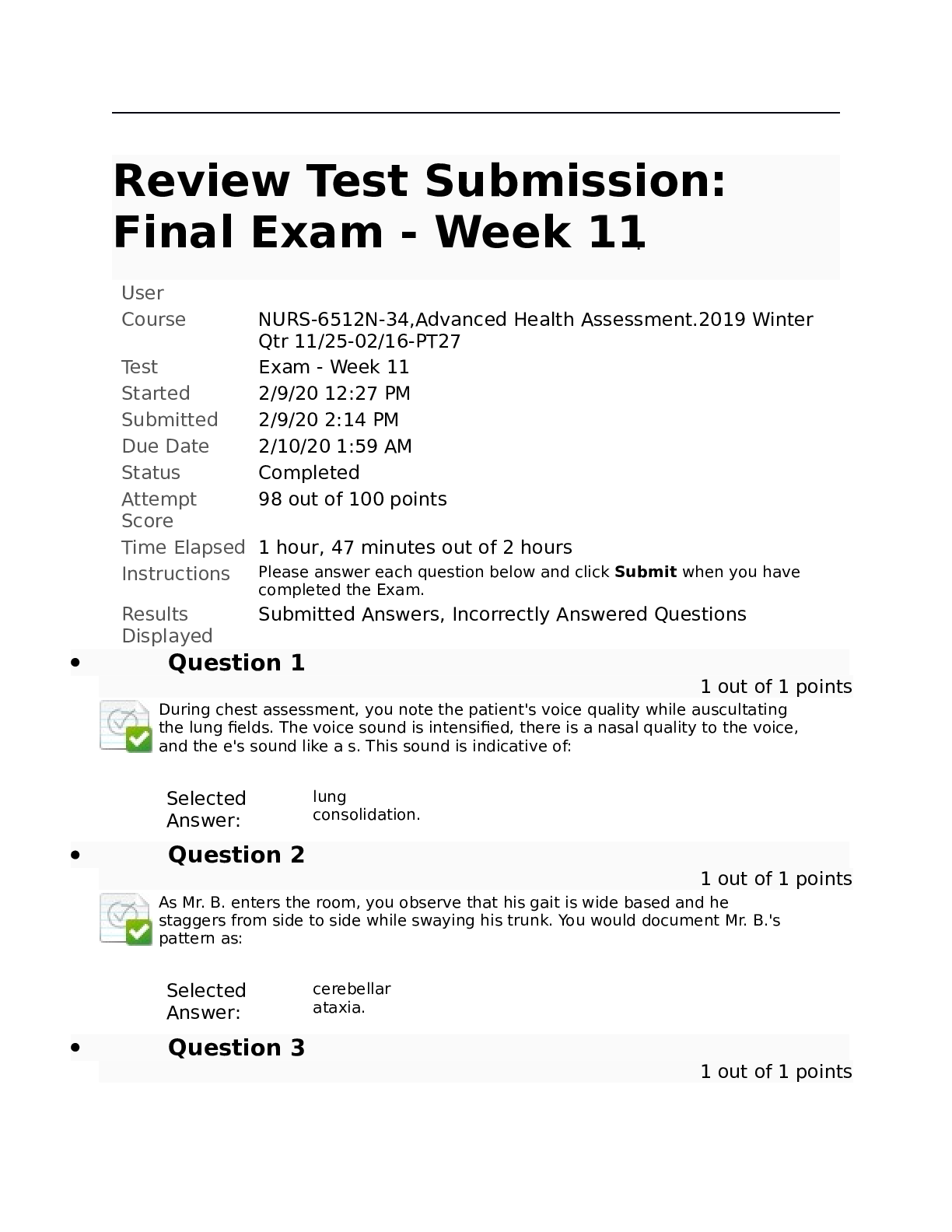
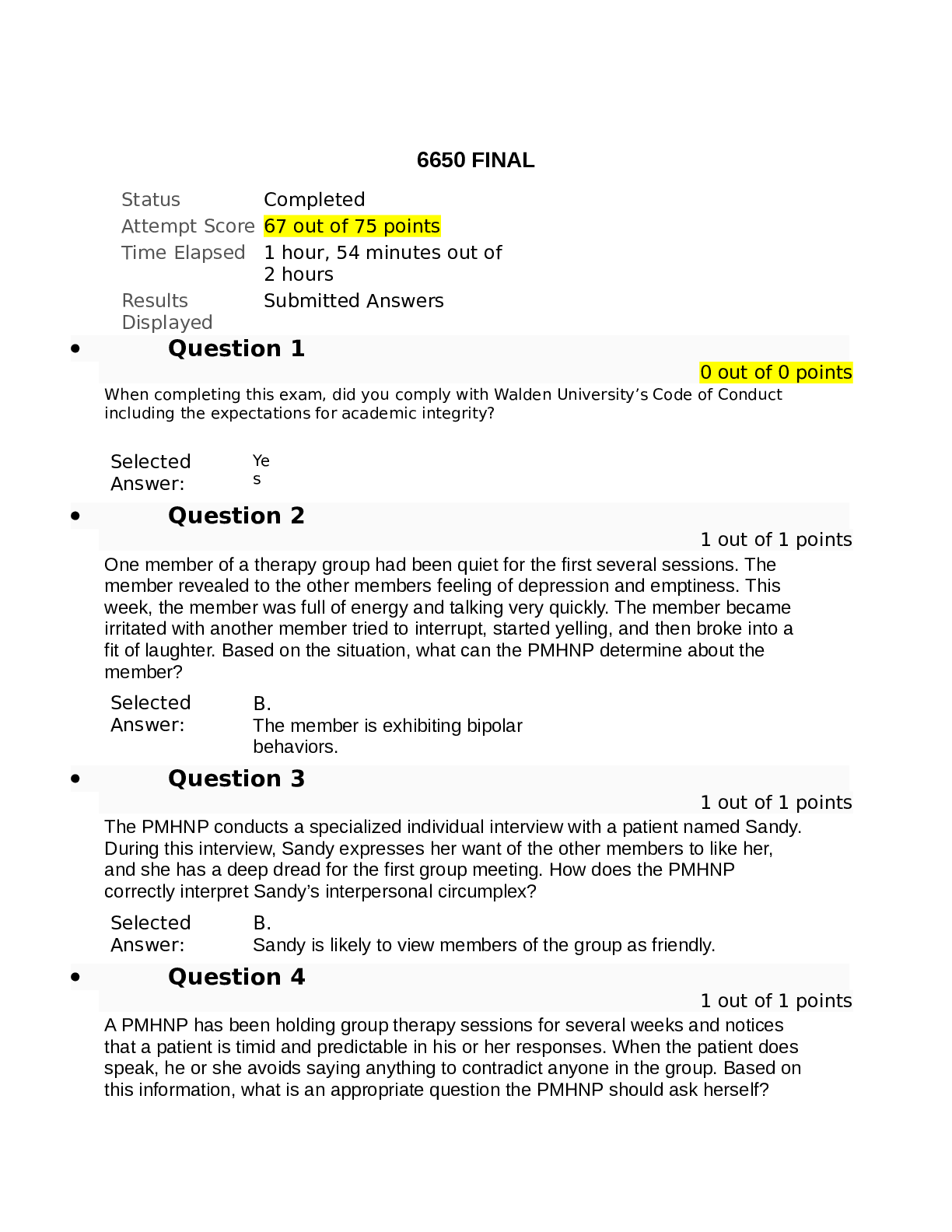




.png)
.png)
.png)

.png)
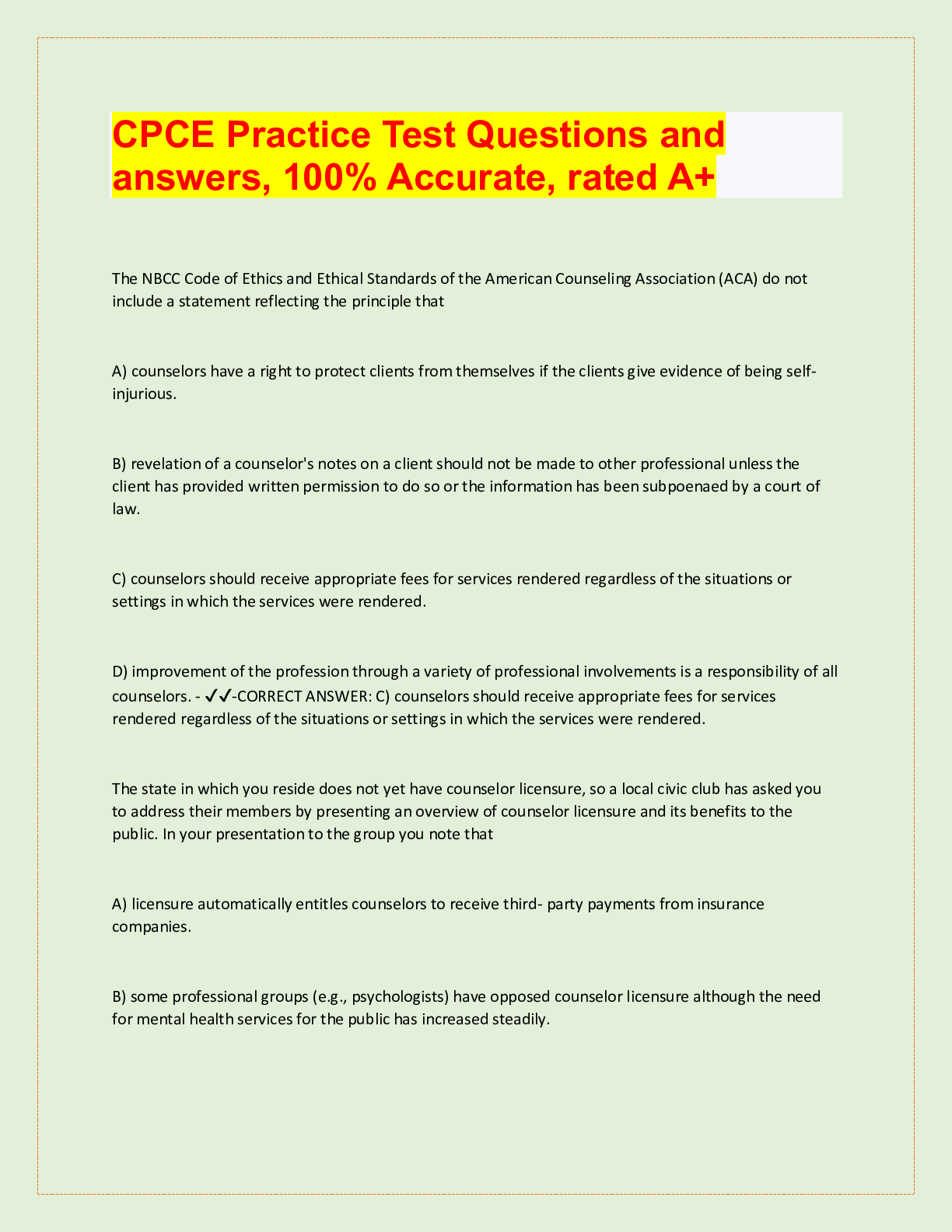

.png)
.png)
.png)







